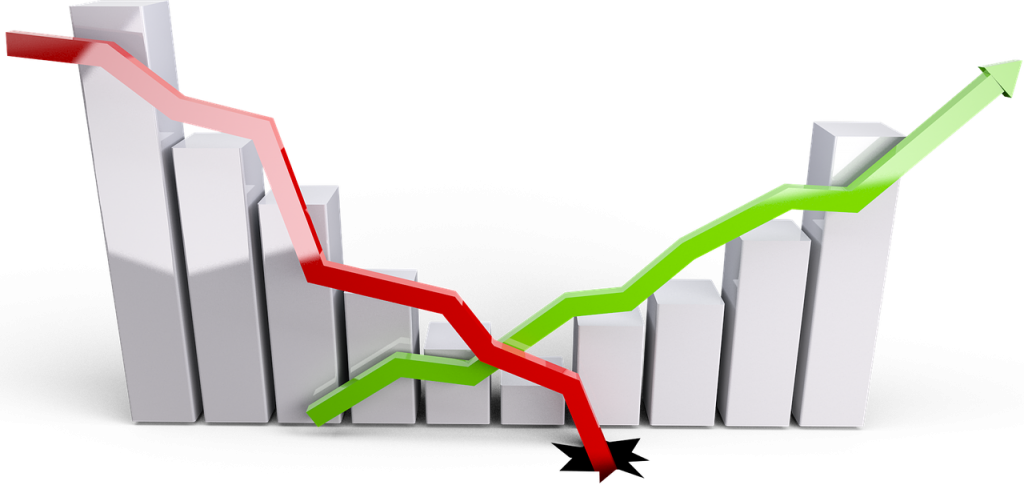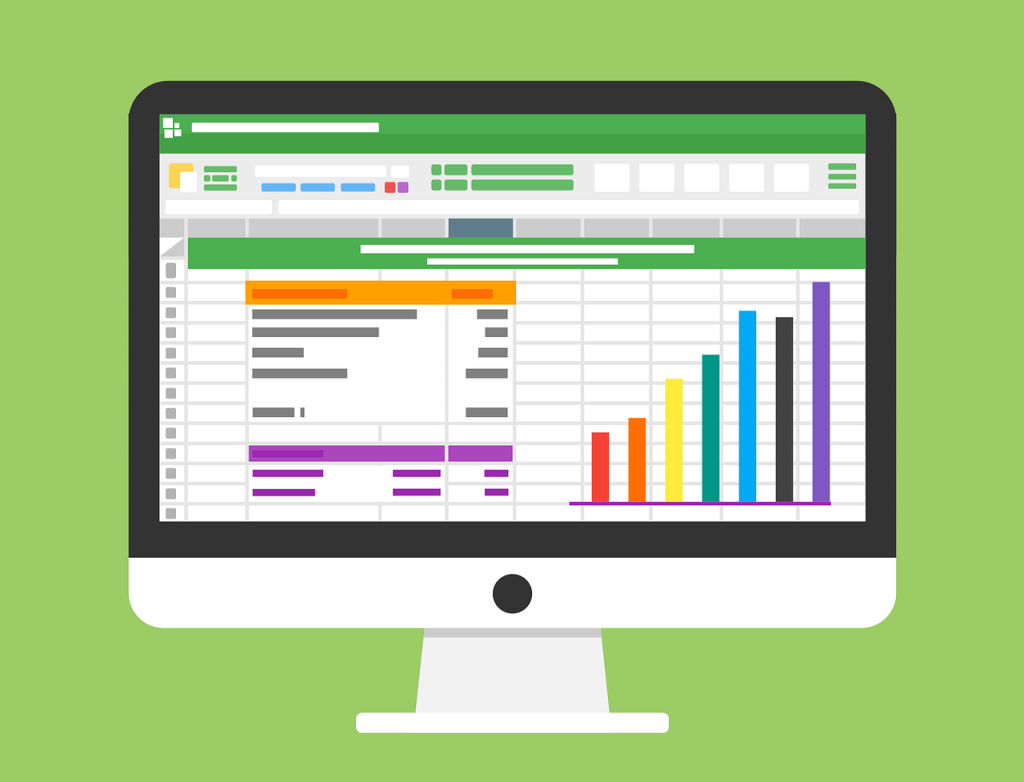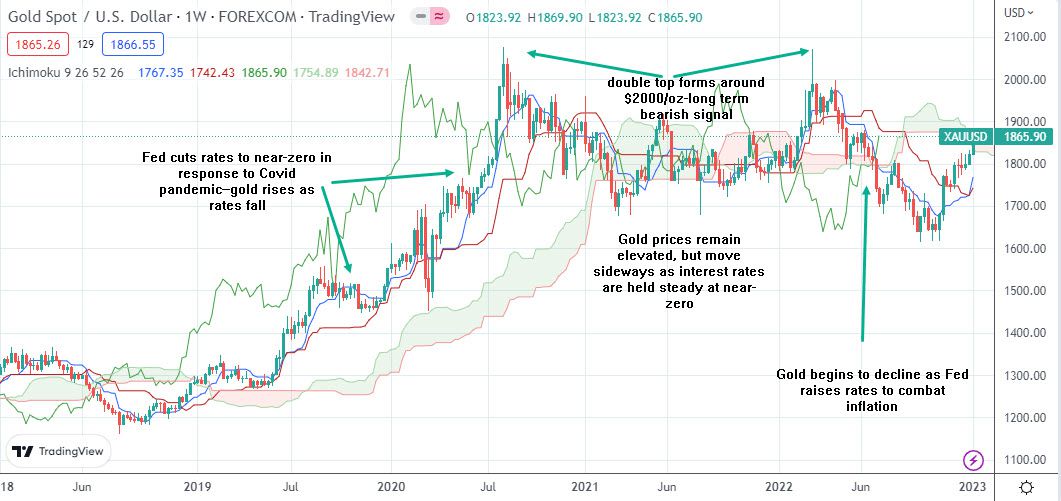Inflation and gold have long been intertwined in the world of investments. It is fascinating to explore the historical data that unravels the link between these two elements. Throughout the years, gold has often been seen as a reliable hedge against inflation, providing a sense of security amidst fluctuating economic conditions. This blog aims to delve into the intricate relationship between inflation and gold, shedding light on how historical data can help us understand this connection better. So, sit back and prepare to embark on a journey through the fascinating world of economic trends and investment strategies.

This image is property of pixabay.com.
The Basics of Inflation and Gold
Understanding Inflation
In order to comprehend the relationship between inflation and gold, it’s crucial to grasp the concept of inflation itself. Inflation refers to the sustained increase in the general price level of goods and services in an economy over a period of time. When inflation occurs, the purchasing power of a currency decreases, as more units of currency are needed to buy the same quantity of goods and services.
The Role of Gold in Investment
Gold has been renowned as a valuable commodity for thousands of years due to its scarcity, durability, and desirability. As a result, it has often been considered a reliable store of value and a hedge against economic uncertainties, including inflation. This perception stems from the belief that the limited supply of gold makes it less susceptible to depreciation in value compared to fiat currencies.
Exploring the Historical Relationship
Gold’s Performance during Inflationary Periods
Throughout history, gold has demonstrated varying degrees of performance during inflationary periods. It has often been observed that the value of gold tends to rise during inflationary periods, as investors seek to preserve their wealth and purchasing power. This is because gold is perceived as a safe haven asset that maintains its value even when paper currencies experience devaluation.
Analyzing Previous Inflationary Episodes
By examining previous inflationary episodes, we can gain insights into the relationship between gold and inflation. For instance, during the inflationary period of the 1970s, when the United States experienced high inflation rates, the price of gold soared. Investors flocked to gold as a hedge against the eroding value of the U.S. dollar. Similarly, in the post-2008 inflationary environment, gold prices surged as central banks around the world implemented monetary easing measures to combat the global financial crisis.
Comparing Gold and Other Assets
When assessing the performance of gold during inflation, it is essential to compare it to other assets. Gold has historically outperformed many other investments during inflationary periods. While stocks and bonds may suffer from declining value during inflation, gold has often provided investors with a reliable store of wealth. However, it should be noted that the performance of gold can vary depending on market conditions and other factors.

This image is property of pixabay.com.
Factors Influencing Gold during Inflation
Supply and Demand Dynamics
The dynamics of supply and demand play a significant role in determining the price of gold during inflation. When demand for gold outweighs its supply, the price tends to rise. Inflation can increase the demand for gold as investors seek to preserve their wealth during times of currency devaluation. Additionally, supply disruptions in gold mining or decreased recycling can impact the availability of gold, further influencing its price during inflationary periods.
Central Bank Policies
Central bank policies can also have a substantial impact on the price of gold during inflation. Monetary easing measures, such as lowering interest rates or implementing quantitative easing, can fuel inflationary pressures and drive investors towards gold as a hedge. Conversely, tightening monetary policies can potentially reduce the appeal of gold as an investment during inflationary periods.
Currency Devaluation
Currency devaluation is a significant factor that can drive investors towards gold during inflation. When a currency loses value, individuals seek assets that can retain their worth. Gold, with its long history as a reliable store of value, becomes an attractive option. Investors may choose to convert their devalued currency into gold to hedge against further depreciation.
Investor Sentiment and Confidence
Investor sentiment and confidence also impact the performance of gold during inflationary periods. When investors are uncertain about the stability of paper currencies and the overall economy, they often turn to gold as a safe investment. A high level of confidence in gold’s ability to preserve wealth can lead to increased demand and drive up its price during inflationary times.
Case Studies: Gold and Inflation
The Impact of 1970s’ Inflation on Gold
The inflationary period of the 1970s provides a compelling case study on the impact of inflation on gold. During this time, the United States experienced stagflation – a combination of high inflation and stagnant economic growth. As the value of the U.S. dollar declined, the price of gold surged from around $35 per ounce in 1970 to over $800 per ounce in 1980. This significant increase in gold prices highlighted its role as a hedge against inflation and currency devaluation.
Lessons from Post-2008 Inflationary Environment
The post-2008 inflationary environment offers another crucial case study. In response to the global financial crisis, central banks implemented expansive monetary policies to stimulate economic growth. These measures increased concerns about inflation and prompted investors to seek safe-haven assets such as gold. As a result, gold prices climbed to record levels, surpassing $1,900 per ounce in 2011. This period emphasized the potential for gold to thrive during inflationary times.

This image is property of pixabay.com.
Investing in Gold as an Inflation Hedge
Portfolio Diversification Benefits
Investing in gold can offer diversification benefits to a portfolio, especially during inflationary periods. Gold has historically exhibited a low correlation with other asset classes, such as stocks and bonds, meaning its price movements often occur independently. By adding gold to a diversified investment portfolio, investors can potentially reduce overall portfolio risk and increase potential returns, particularly during inflationary periods.
Allocating Funds to Gold
When considering an allocation of funds to gold, it’s important to assess individual risk tolerance and investment objectives. The proportion of gold in a portfolio will vary based on an investor’s risk appetite and diversification goals. Financial advisors often recommend an allocation of 5-10% to precious metals, including gold, as a starting point for investors looking to hedge against inflation and diversify their holdings.
Choosing between Physical Gold and Gold ETFs
Investors looking to invest in gold have the option to purchase physical gold, such as bars or coins, or invest in gold exchange-traded funds (ETFs). Physical gold provides the advantage of direct ownership, tangible assets, and potential flexibility for storage. However, it can also present challenges in terms of storage, insurance, and liquidity. Gold ETFs offer a convenient way to invest in gold without the need for physical possession but involve trade-offs in ownership and potential counterparty risks. The choice between physical gold and gold ETFs depends on an investor’s preferences and individual circumstances.
Potential Risks and Drawbacks
Volatility and Price Fluctuations
As with any investment, gold is not without its risks. While it has demonstrated its ability to preserve wealth during inflationary periods, gold prices can be highly volatile. Rapid price fluctuations can result from various factors, including geopolitical events, economic data releases, and changes in investor sentiment. It is essential for investors to have a long-term perspective and be prepared for short-term price movements when investing in gold.
Storage and Security Concerns
For those opting for physical gold, storage and security become important considerations. Storing physical gold securely can involve additional costs and logistical challenges. Investors must consider factors such as insurance, safe deposit boxes, or private vault services. It is important to research and choose the most secure and reputable options when storing physical gold to mitigate any potential risks.
Future Outlook: Inflation and Gold
Economic Factors to Monitor
The future outlook for inflation and gold depends on various economic factors. Monitoring indicators such as inflation rates, central bank policies, currency fluctuations, and global economic trends can provide insights into potential future price movements of gold. Additionally, keeping an eye on geopolitical developments and factors impacting supply and demand dynamics can help investors navigate the dynamic relationship between inflation and gold.
Gold’s Role in a Changing World Economy
As the world economy evolves, gold is likely to continue playing a fundamental role as a store of value and an inflation hedge. With ongoing economic uncertainties and potential inflationary pressures, the demand for gold as a safe-haven asset may persist. Additionally, the increasing importance of emerging markets and the diversification of global currencies could further impact the demand and price of gold in the future.
Practical Tips for Gold Investors
Monitoring Inflation Indicators
To make informed decisions about gold investments, monitoring inflation indicators becomes crucial. Following key indicators such as consumer price index (CPI), producer price index (PPI), and interest rates can help gauge the potential impact of inflation on the economy and identify periods of increasing inflationary pressures. These indicators can guide investors in timing their entry and exit points in relation to gold.
Consulting with Financial Advisors
Investors considering gold as part of their portfolio should consult with experienced financial advisors. A professional advisor can provide valuable insights and guidance tailored to an individual’s investment goals, risk tolerance, and overall financial situation. They can help investors determine the optimal allocation of funds to gold and navigate potential risks associated with gold investments.
Maintaining a Long-Term Perspective
Investing in gold, like any investment, requires a long-term perspective. Short-term price fluctuations and market volatility should not deter investors seeking to hedge against inflation and diversify their portfolios. By maintaining a focus on long-term wealth preservation and staying informed about economic trends, investors can make informed decisions regarding their gold investments.
Conclusion
In conclusion, gold has a long-standing reputation as a reliable hedge against inflation. Its performance during inflationary periods, historical evidence, and perceived store of value have made it an attractive investment option for many investors. However, investing in gold carries its own risks and challenges, including price volatility and storage concerns. By considering the historical relationship between inflation and gold, understanding the factors influencing gold during inflationary periods, and adopting a prudent investment approach, investors can potentially harness the benefits of gold as an inflation hedge. As always, conducting thorough research and seeking expert advice are essential when delving into the world of gold investments.



